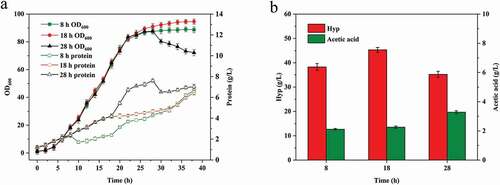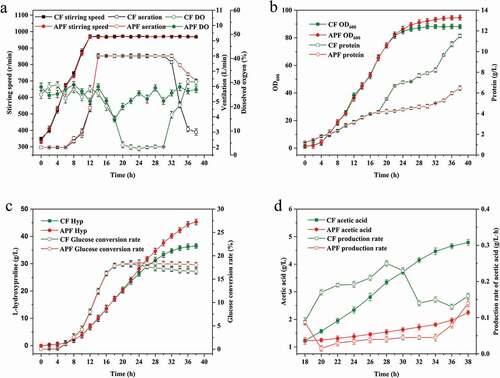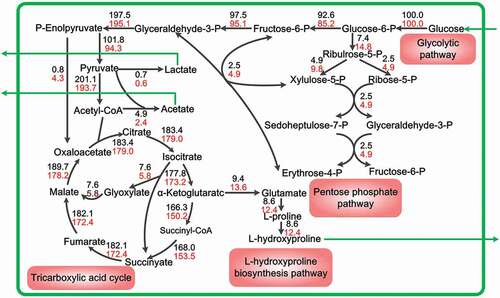Figures & data
Figure 2. Effect of different protease types and concentrations on the OD600, protein content, and trans-4-hydroxy-L-proline concentration in the fermentation broth. (a) Alkaline protease; (b) neutral protease; (c) trypsin; (d) complex protease.

Figure 3. Effect of trypsin addition time on the fermentation of trans-4-hydroxy-L-proline. (a) OD600 and protein content; (b) trans-4-hydroxy-L-proline concentration and acetic acid accumulation.

Figure 4. Effect of trypsin addition on trans-4-hydroxy-L-proline production. CF is control fermentation (no protease added); APF is added-protease fermentation (trypsin was added at 18 h). (a) Stirring speed, aeration and dissolved oxygen; (b) OD600 and protein content; (c) Hyp concentration and glucose conversion rate; (d) acetic acid concentration and production rate.




